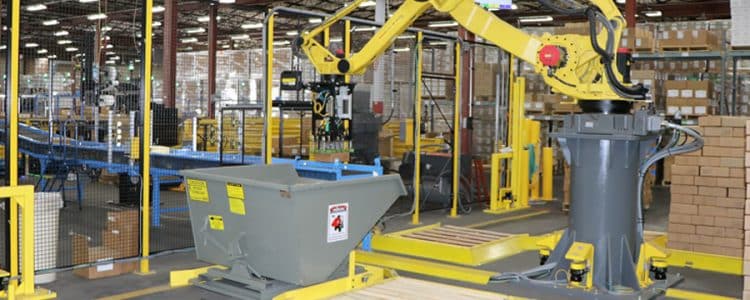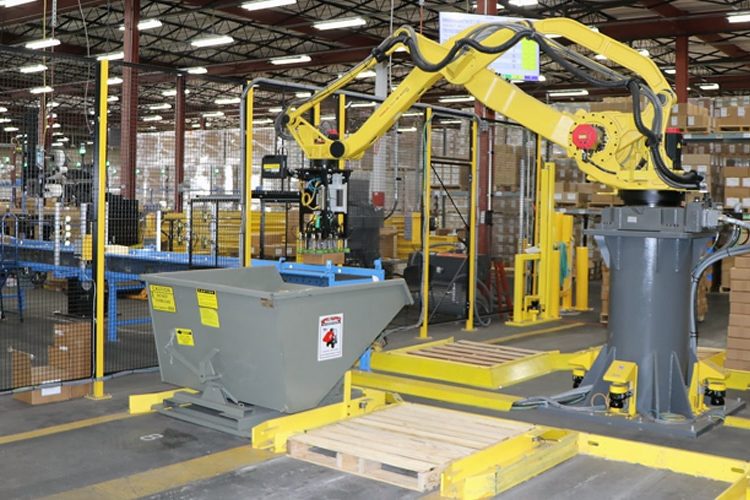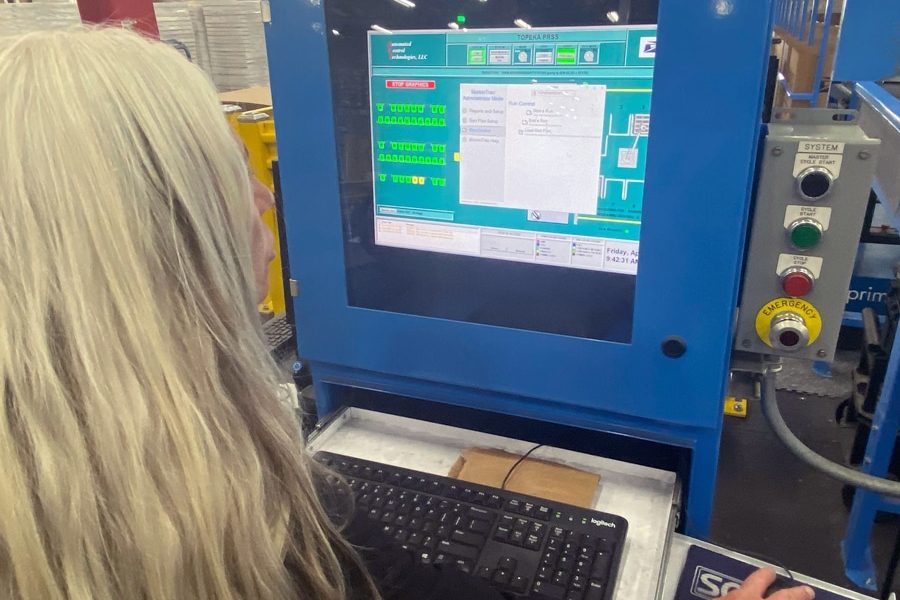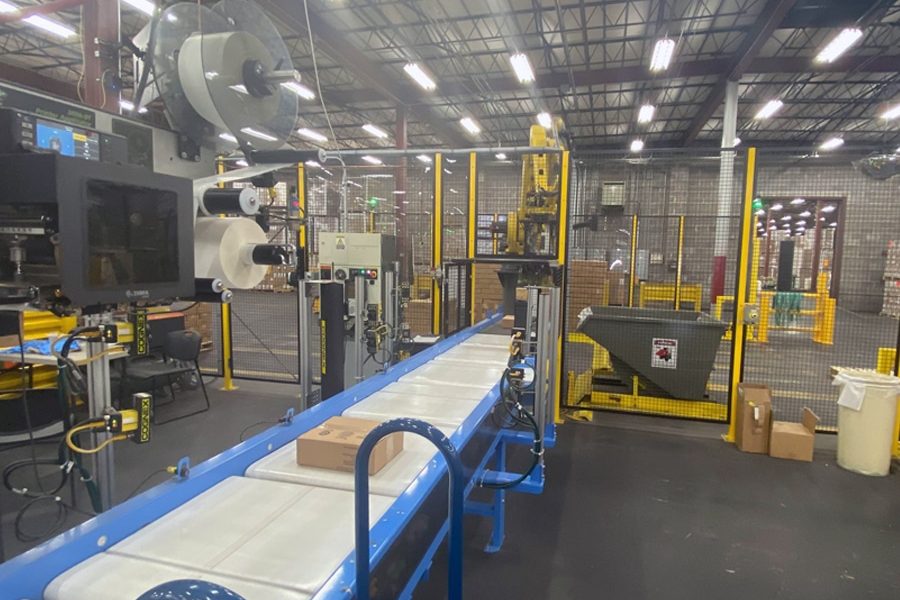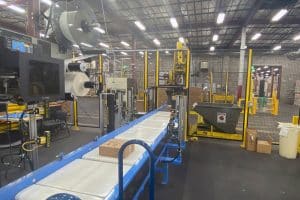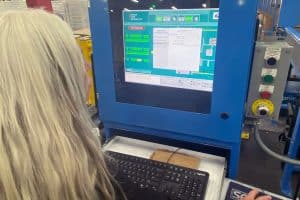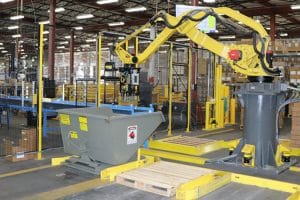April 21, 2023
While the Postal Service uses robots in plants across the country, the system recently installed at the Topeka, KS, Material Distribution Center might be the most advanced yet.The busy center — often called the Postal Service’s warehouse — stores approximately 33,000 different items, including repair parts, supplies, stamps and more that it ships to the organization’s 21 network distribution centers (NDCs).
Fulfilling NDC orders has always been a time-consuming, labor-intensive process, said Joyce Guthrie, a robotics engineer with the Postal Service’s automated guided vehicles and robotics team.
“Employees had to pull the pallets of items, pick out what they wanted and place them on a separate pallet for distribution. Topeka wanted a more efficient process,” Guthrie said.
Last August, the team installed the organization’s first parcel robotic sortation system, or PRSS. The cutting-edge system uses a robot that operates in a closed cell, a conveyor and autonomous mobile robots, or AMRs.
“Putting it together creates pretty much a fully automated system,” said Amit Cholkar, technology development and applications senior director.
Along with new sorting machines, increased use of robotics is part of the organization’s 10-year Delivering for America plan to modernize the Postal Service.
The Topeka center, which has 15 AMRs, is one of several postal facilities where the robots, which are equipped with scanners that read shipping labels and QR codes, are used.
Here’s how the PRSS works: Employees upload orders for items, which creates a manifest that is sent to the PRSS.
Then, based on what is on the manifest, forklift drivers bring pallets of items into the robot cell, where a mechanical arm unloads the pallets.
“The robot takes items and puts them on a conveyor where they are scanned and shipping labels are attached,” Guthrie said.
AMRs take the items from the conveyor, get the ZIP Code and location information from the system’s “brain” — called the process control system — and drop the items into containers designated for specific NDCs. Forklift drivers later load the containers onto trucks for shipping.
Only two employees are needed to move the pallets in the PRSS, which can process 3,000 to 4,000 orders a day with virtually no scanning errors. There is also an operator who removes the full containers and replaces them with empty ones. The workday often ends two hours earlier than before the PRSS was installed, and NDCs get their items faster.
“There’s no waiting or rushing or having to assign extra people to get containers done. Now, trucks come in, get loaded and go. It’s all done,” Guthrie said.
The PRSS — which takes approximately three weeks to install, including programming the AMRs — has limitations, though. For instance, really large items must be sorted manually because they won’t fit on the conveyor.
Aside from other considerations, such as cost of installation relative to a plant’s volume, “we could implement this solution in any plant in the country,” Cholkar said.
Source: USPS

